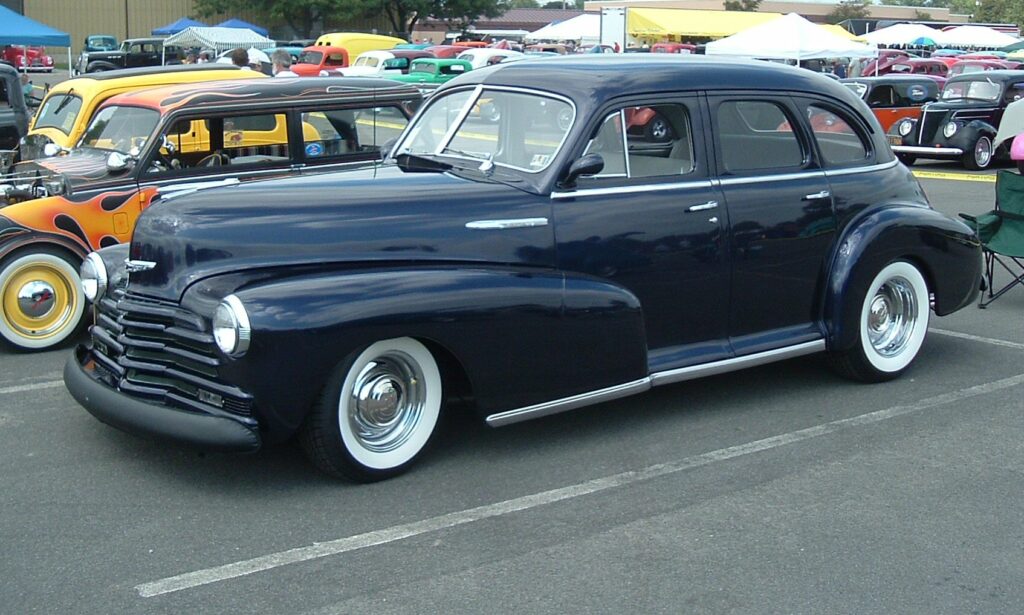Maintaining your fleet is a priority. Ensuring longevity and reliability without overspending is a priority. Chevy Fleet Vehicles Restoration offers a cost-effective and sustainable alternative to purchasing new vehicles, but choosing the right restoration service is crucial.
Do you know what to look for in a restoration service to maximize your investment and minimize downtime?
Why Chevy Fleet Vehicles Restoration Is Essential
Fleet vehicles undergo significant wear and tear, often leading to expensive repairs or replacements.
However, Chevy Fleet Vehicles Restoration can save you up to 50% on costs compared to buying new vehicles. Additionally, restoration can extend the life of your fleet, allowing you to utilize the vehicle’s lifecycle while maintaining operational efficiency fully.
Key Factors to Consider When Choosing a Restoration Service in Jarrell, TX
Selecting the right Chevy Fleet Vehicles Restoration service can make all the difference in the longevity and performance of your fleet. Here are the critical factors to keep in mind:
1. Expertise in Remanufacturing
A top-tier restoration service should have extensive experience in remanufacturing, especially with fleet vehicles. The process requires more than basic repairs—it involves a comprehensive overhaul of the vehicle, including the engine, transmission, suspension, and interior.
Ensure your chosen service has a proven track record in Chevy Fleet Vehicles Restoration to guarantee quality results.
2. Comprehensive Assessment Process
A thorough assessment is vital before any restoration work begins. This step ensures that every aspect of the vehicle, from the powertrain to the bodywork, is evaluated for potential issues.
A reliable restoration service will provide a detailed assessment and quote, allowing you to understand the scope of work and associated costs upfront.
3. Customization and Flexibility
Your fleet has specific needs, and the restoration service you choose should offer customization options to meet them. Whether adjusting the suspension for heavy-duty use or upgrading the interior for comfort, the service should tailor the restoration process to your fleet’s requirements.
4. Turnaround Time
Downtime is costly for any business, so choosing a quick turnaround restoration service is essential. Leading Chevy Fleet Restoration Service providers typically complete the process within 2-4 weeks, minimizing disruption to your operations.
5. Warranty and Post-Service Support
A comprehensive warranty is a hallmark of a reputable restoration service. Look for a provider that offers at least a three-year, 100,000-mile powertrain warranty. This warranty provides peace of mind, ensuring that any issues post-restoration are covered.
The Restoration Process Explained
Understanding the restoration process can help you make informed decisions about your fleet. Here’s a breakdown of what to expect:
1. Assessment and Initial Quote
The process begins with an in-depth assessment of the vehicle. This includes a road test for running units and a lift inspection. The service provider will then offer a revised intake assessment and a final quote based on the findings.
2. Fluid Recovery and Cleaning
Before any work starts, all fluids (refrigerants, lubricants, fuel) are recovered to ensure safety. The vehicle is then thoroughly cleaned to prepare for the remanufacturing process.
3. Teardown and Component Replacement
The vehicle is disassembled, often separating the cab from the chassis. This step allows for easier access to critical components such as the engine, transmission, suspension, and brakes, all replaced or serviced as needed.
4. Powertrain Overhaul
The engine, transmission, and gearbox are removed and replaced with components supported by a nationwide dealer network. Differentials are inspected and serviced, with replacements made if necessary.
5. Suspension and Mechanical Repairs
Suspension components, steering gears, brakes, and other mechanical parts are replaced. The service also includes inspecting and replacing wheels, tires, and other critical mechanical systems.
6. Interior Restoration
The interior undergoes a complete refurbishment, including seats, steering wheel, dashboard, door panels, and flooring. This step ensures that the vehicle functions well and looks and feels new.
7. Exterior Work and Reassembly
The final stages involve dent and ding repair, primer application, painting, and glass replacement. Once the exterior is complete, the cab and chassis are reassembled, and any specialized service body or upfit items are installed.
8. Quality Inspection and Road Test
The restored vehicle undergoes a rigorous quality inspection and road test to ensure everything functions perfectly. Once all checks are complete, the vehicle is ready to return to service.
Conclusion
Choosing the right Chevy Fleet Vehicles Restoration service is a critical decision that can save your business significant time and money while extending the life of your fleet.
Focusing on expertise, customization, quick turnaround times, and comprehensive warranties can ensure that your fleet is in the best hands.
To maximize your investment and minimize downtime, consider partnering with a trusted provider like Vehicle Reman — where we prioritize your fleet’s efficiency and sustainability, ultimately contributing to your bottom line.
